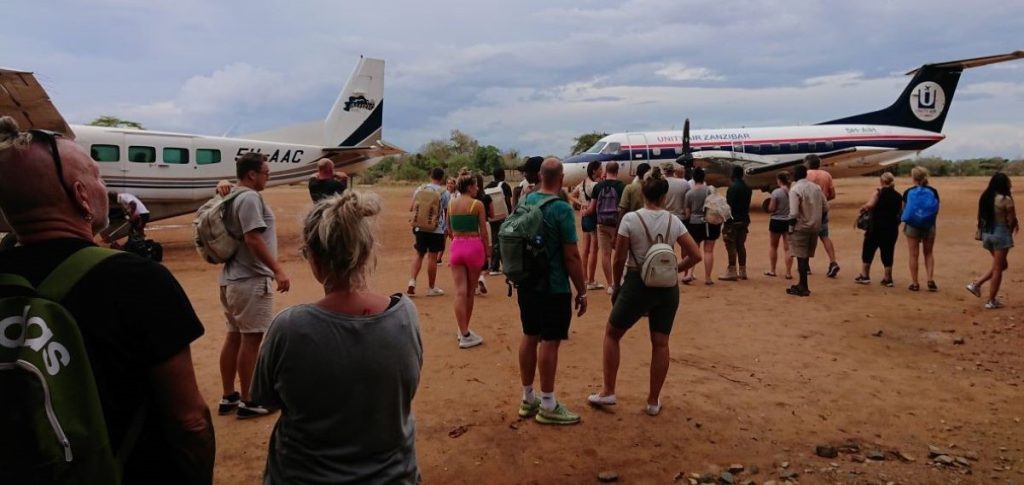Which is the biggest National Park in East Africa?
Well, for starters there are more than 82 plum sites that has just been rolled out for investments in hospitality business inside the Nyerere National Park, in Tanzania.
Nyerere also happens to be the biggest National Park in East Africa in addition to be the newest (it will be only five years old in November 2024).
These attractive locations have already been measured out and ready to be issued to people who are interest to invest in hotels, lodges and other accommodation facilities within the vast National Park.
All the plots, sites and locations have already been surveyed and are now up for grabs.
The Tanzania National Parks (TANAPA)’s Assistant Commissioner of Conservation, Ephraim Mwangomo who commands the Nyerere National Park, said the number of visitors touring the country’s newest conservancy is increasing rapidly.
“People worldwide are now discovering what Nyerere National Park is offering, which features a pristine natural environment packed with abundant wildlife, plus scenic sites such as oxbow lakes, rivers and the soon to be unveiled, giant man-made lake in form of the new Nyerere Hydroelectric dam,” revealed ACC Mwangomo.

The conservator pointed out that this potential of the new park calls for heavy investments in accommodation facilities, because it is being anticipated that Nyerere will soon overtake even Serengeti, in attracting large numbers of both local and foreign visitors.
“Areas for interested parties to come and invest in accommodation facilities are very much available, these happen to be lucrative opportunities capable of yielding gold for almost forever,” the conservator maintained.
“Nyerere is a premium destination, graded in Category One in the same class as Serengeti,” said Mwangomo, adding that investing in the National Park is the most lucrative deal that one can ever expect to undertake.
Measuring 30,893 square kilometers, Nyerere is essentially the biggest National Park in East Africa.
In fact, the park is bigger than Belgium, the European country which covers 30,355 square kilometers and Lesotho (30,528).
But despite Nyerere’s astounding size, there are only 102 beds for visitors in the National Park.
Currently Nyerere has 33 permanent campsites, but only eight of them are inside the park, the other 25 are located outside.
According to ACC Mwangomo, accommodations in the park are also offered through 4 temporary camping sites. There are also three picnic sites at Nyerere.
“But through the Resilient Natural Resource Management for Tourism and Growth project, we expect to build new facilities,” explained Conservation Officer Daniel Mathayo, the REGROW project focal person at Nyerere National Park.
The World Bank funded project will produce 126 new bed capacity, making the park have 228 beds for visitors but according to the official, this is still far from being adequate.
Conservator Mathayo revealed that through REGROW new campsites being established in the vast park will see the addition of more than 100 beds, while another rest house with a bed capacity of 26 will also be realized.
Nyerere National Park was established in November 2019 after being annexed from the Selous Game Reserve.
It started out with just 151 visitors but at the moment the Park attracts an average of 55,000 tourists per year and as of now Nyerere is generating around 11 billion/- in revenues and counting.
“However many of the tourists visiting Nyerere at the moment are mostly day trippers who usually land in the morning from Zanzibar, undertake game drives in the Park before flying out again in the evening,” Assistant Conservation Commissioner, Mwangomo said.
The Park management is now working to ensure that these visitors spend between one and two nights, if not more for improved experience and this can only be possible once Nyerere NP gets enough beds to accommodate them.
Located some 160 Kilometers from Morogoro Municipality, Nyerere National Park is however less than 3 hours’ drive from Dar-es-salaam City using the Kisarawe route.
The Park is accessible through all modes of transport, including by air, road and rail (Tanzania-Zambia Railway), while touring the park can also be undertaken by air, road or even water, on a number of rivers and lakes dotting the landscape.
Apparently, sport fishing is one of the popular tourism activities at Nyerere, in addition to night game drives to spot those elusive species of wildlife. Nyerere is also a photographer’s paradise.



